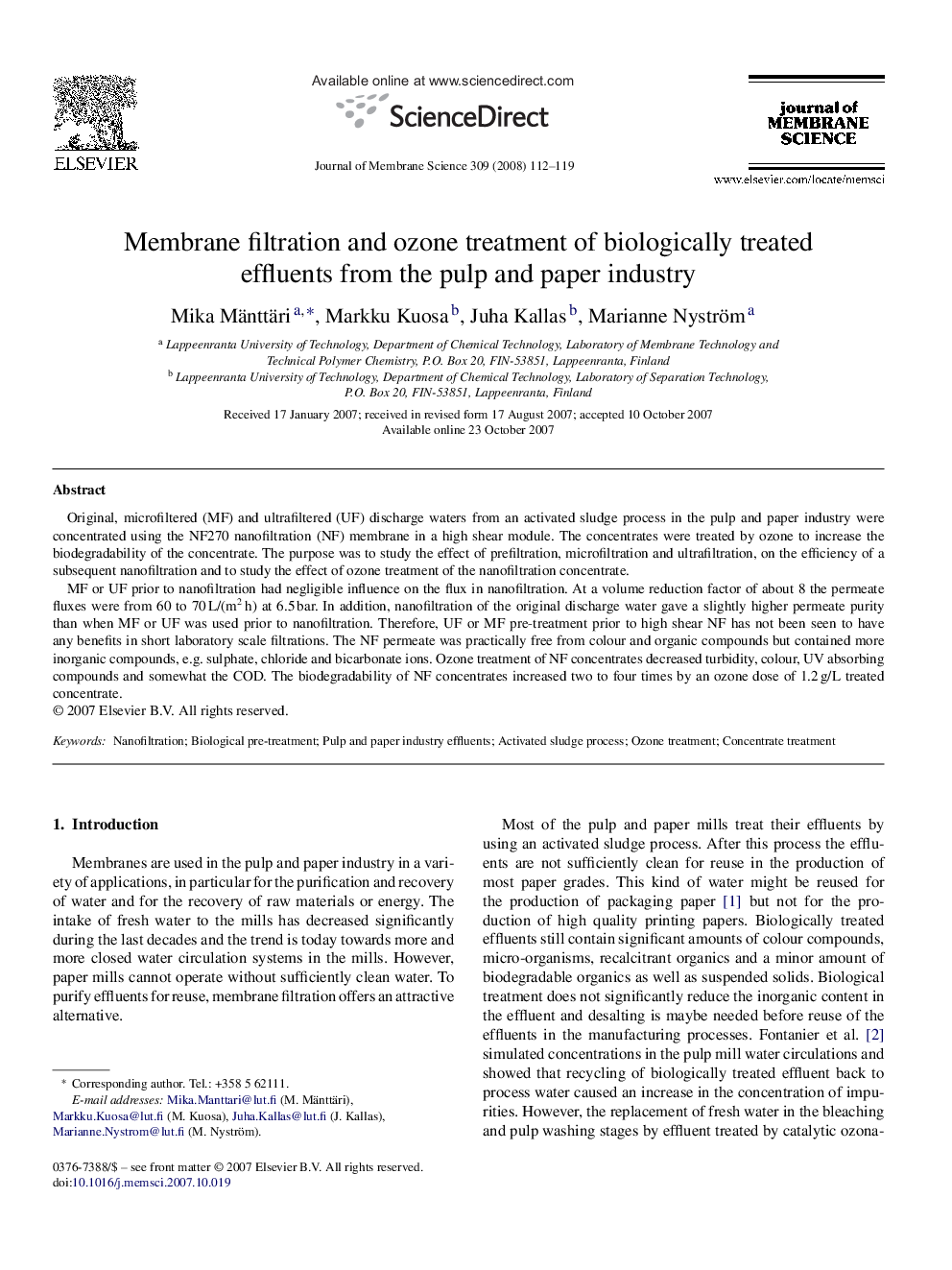| Article ID | Journal | Published Year | Pages | File Type |
|---|---|---|---|---|
| 638250 | Journal of Membrane Science | 2008 | 8 Pages |
Original, microfiltered (MF) and ultrafiltered (UF) discharge waters from an activated sludge process in the pulp and paper industry were concentrated using the NF270 nanofiltration (NF) membrane in a high shear module. The concentrates were treated by ozone to increase the biodegradability of the concentrate. The purpose was to study the effect of prefiltration, microfiltration and ultrafiltration, on the efficiency of a subsequent nanofiltration and to study the effect of ozone treatment of the nanofiltration concentrate.MF or UF prior to nanofiltration had negligible influence on the flux in nanofiltration. At a volume reduction factor of about 8 the permeate fluxes were from 60 to 70 L/(m2 h) at 6.5 bar. In addition, nanofiltration of the original discharge water gave a slightly higher permeate purity than when MF or UF was used prior to nanofiltration. Therefore, UF or MF pre-treatment prior to high shear NF has not been seen to have any benefits in short laboratory scale filtrations. The NF permeate was practically free from colour and organic compounds but contained more inorganic compounds, e.g. sulphate, chloride and bicarbonate ions. Ozone treatment of NF concentrates decreased turbidity, colour, UV absorbing compounds and somewhat the COD. The biodegradability of NF concentrates increased two to four times by an ozone dose of 1.2 g/L treated concentrate.
